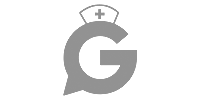Ensuring patient safety is a cornerstone of nursing practice and a critical component of the NCLEX (National Council Licensure Examination). Aspiring nurses must demonstrate a thorough understanding of safety protocols and best practices to succeed in the NCLEX and provide high-quality care in their professional careers. This comprehensive guide delves into the best practices for ensuring patient safety and highlights key focus areas on the NCLEX exam.
💡 Ultimate NCLEX Study Mega Guide
Your must‑have resource to NCLEX cheat sheets, mnemonics & key topics - all in one place.
Introduction
Patient safety is paramount in healthcare settings. It involves minimizing risks, preventing harm, and ensuring optimal outcomes for patients. The NCLEX exam rigorously tests candidates on their ability to implement safety measures effectively. This article explores the fundamental principles of patient safety, best practices, and the specific areas of focus on the NCLEX exam.
Understanding Patient Safety
Patient safety encompasses a wide range of practices aimed at preventing errors, reducing harm, and promoting a culture of safety within healthcare environments. Key aspects include:
- Error Prevention: Implementing strategies to avoid mistakes in patient care.
- Risk Management: Identifying and mitigating potential hazards.
- Quality Improvement: Continuously enhancing care processes and outcomes.
- Patient-Centered Care: Ensuring that care is tailored to the individual needs and preferences of patients.
Best Practices for Ensuring Patient Safety
1. Effective Communication
Clear and concise communication among healthcare providers is essential for patient safety. Best practices include:
- SBAR Technique: Situation, Background, Assessment, Recommendation – a standardized method for communicating critical information.
- Hand-Off Reports: Ensuring thorough and accurate transfer of patient information during shift changes.
- Patient Education: Providing patients with clear instructions and information about their care.
2. Medication Safety
Medication errors are a significant concern in healthcare. Best practices to ensure medication safety include:
- Five Rights of Medication Administration: Right patient, right medication, right dose, right route, and right time.
- Double-Check Systems: Verifying medications with another healthcare provider.
- Electronic Health Records (EHR): Utilizing technology to track and manage medications accurately.
3. Infection Control
Preventing infections is crucial for patient safety. Best practices include:
- Hand Hygiene: Regular and thorough handwashing or use of hand sanitizers.
- Personal Protective Equipment (PPE): Proper use of gloves, masks, gowns, and other protective gear.
- Sterilization and Disinfection: Ensuring that medical instruments and environments are clean and sterile.
4. Fall Prevention
Falls can lead to serious injuries, especially in vulnerable populations. Best practices include:
- Risk Assessments: Regularly evaluating patients for fall risk factors.
- Environmental Modifications: Ensuring that patient rooms and common areas are free of hazards.
- Assistive Devices: Providing walkers, canes, and other devices to support patient mobility.
5. Safe Patient Handling
Proper techniques for moving and handling patients are essential to prevent injuries. Best practices include:
- Body Mechanics: Using correct posture and techniques to lift and move patients.
- Mechanical Aids: Utilizing lifts, transfer boards, and other equipment to assist with patient handling.
- Teamwork: Collaborating with other healthcare providers to safely move patients.
NCLEX Focus Areas on Patient Safety
The NCLEX exam assesses candidates on various aspects of patient safety. Key focus areas include:
1. Safety and Infection Control
This category covers the nurse's ability to protect patients and healthcare personnel from environmental hazards and infectious diseases. Topics include:
- Standard Precautions: Guidelines for preventing the spread of infections.
- Isolation Precautions: Procedures for managing patients with contagious diseases.
- Emergency Response Plans: Protocols for handling emergencies, such as fires or natural disasters.
2. Management of Care
This category evaluates the nurse's ability to provide and direct nursing care that enhances the delivery of safe, quality care. Topics include:
- Delegation: Assigning tasks to appropriate personnel while ensuring patient safety.
- Case Management: Coordinating care to meet the comprehensive needs of patients.
- Legal and Ethical Issues: Understanding the legal and ethical implications of nursing practice.
3. Health Promotion and Maintenance
This category focuses on the nurse's role in promoting health and preventing illness. Topics include:
- Screenings and Assessments: Conducting regular health checks to identify potential issues early.
- Patient Education: Teaching patients about healthy lifestyle choices and preventive measures.
- Immunizations: Ensuring patients receive appropriate vaccinations.
4. Reduction of Risk Potential
This category assesses the nurse's ability to reduce the likelihood of patients developing complications or health problems. Topics include:
- Diagnostic Tests: Understanding and interpreting test results to identify risks.
- Therapeutic Procedures: Safely performing and monitoring medical procedures.
- Monitoring for Complications: Vigilantly observing patients for signs of adverse reactions or complications.
Conclusion
Ensuring patient safety is a fundamental responsibility of nurses and a critical component of the NCLEX exam. By mastering best practices in communication, medication safety, infection control, fall prevention, and safe patient handling, aspiring nurses can provide high-quality care and succeed in their licensure exams. Understanding the key focus areas on the NCLEX will help candidates prepare effectively and demonstrate their competence in promoting patient safety.
By prioritizing patient safety, nurses can make a significant impact on the well-being of their patients and contribute to a safer healthcare environment.







